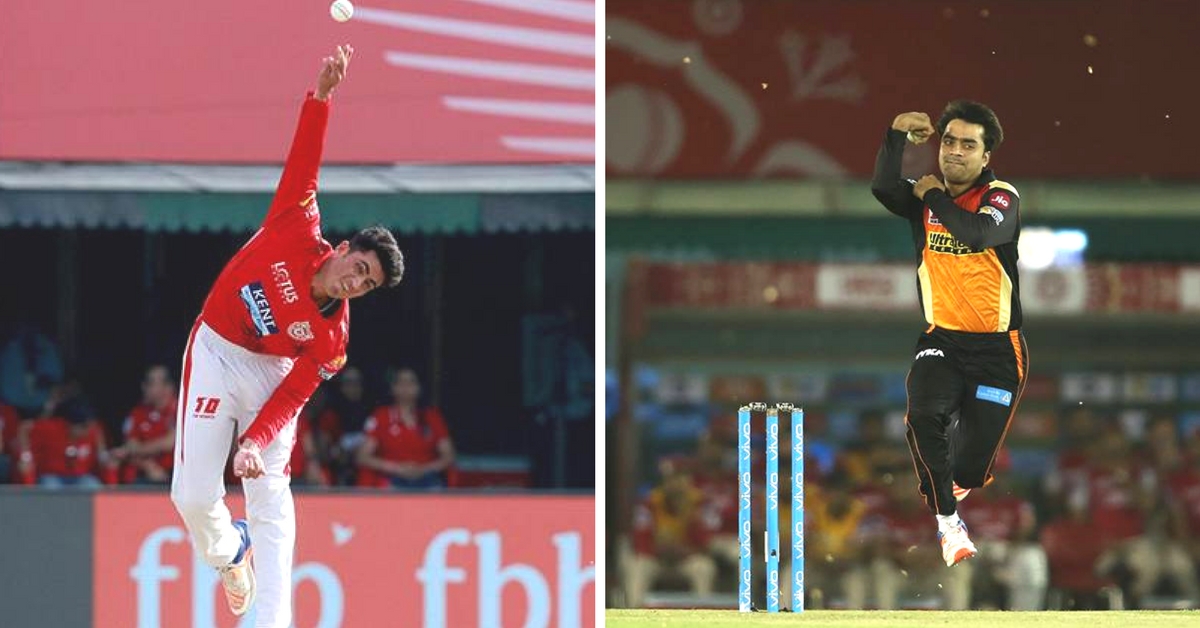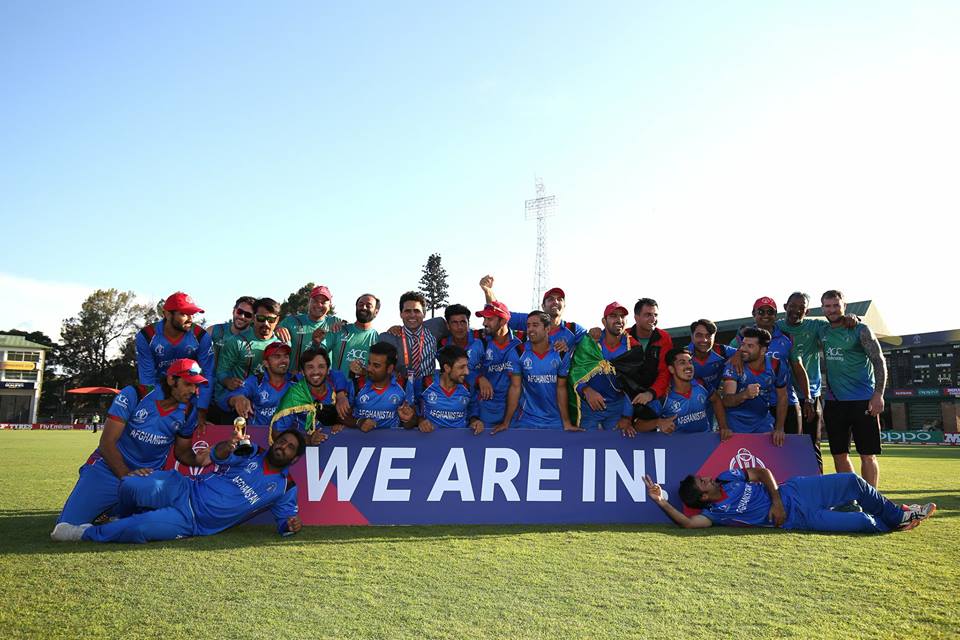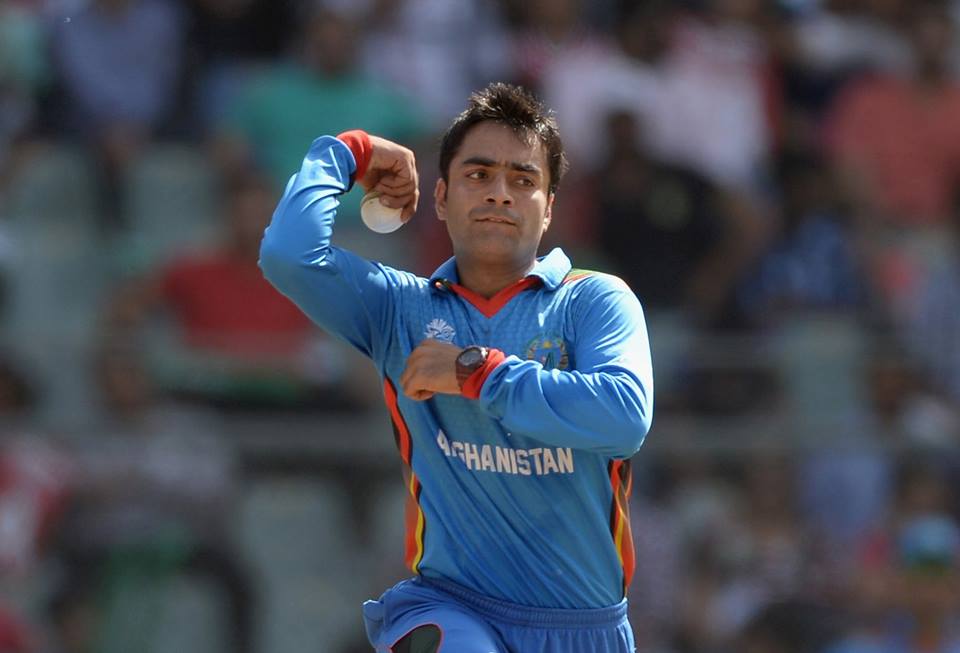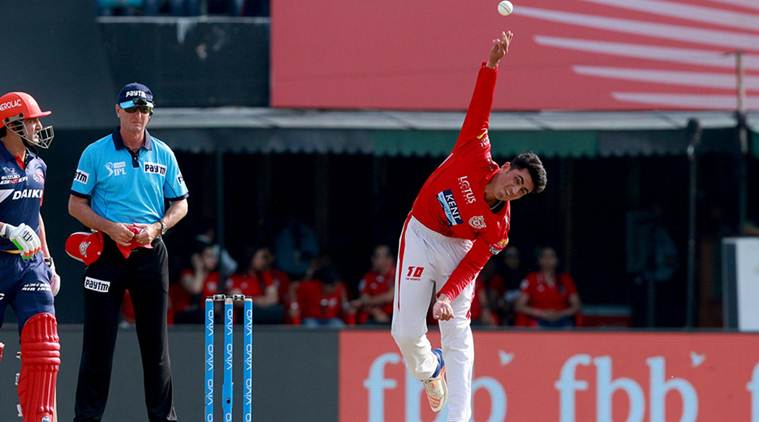Two Sensational Spinners In The IPL Are Lighting Up A War-Ravaged Nation!
IPL has given these two sensational Afghan spinners a huge platform to express their talents. Their stories are intertwined with the revolution in Afghan cricket.

One evening, I switched on the television set and watched an Indian Premier League match between Sunrisers Hyderabad and Kings XI Punjab. Aside from some fantastic batting from Chris Gayle and Kane Williamson, the match wasn’t particularly exciting. However, what caught my eye were the two spinners bowling for either side—Rashid Khan and Mujeeb Zadran.
Rashid and Mujeeb are both young spinners gracing different facets of spin bowling. Not only do these bowlers have the potential for greatness with their immense skill and robust mentality, but they also represent the phenomenal rise of cricket in war-ravaged Afghanistan.
More than three decades ago, cricket was nearly a non-existent entity in Afghanistan. With generations of Afghans devastated by a civil war that has gone on for more than three decades, the sport of cricket, introduced to this stunning landscape by the British in the late 19th century, was furthest away from the minds of Afghans living in the war zone.
However, for those refugees who had escaped to nearby Pakistan during the nearly decade-long war between the then Soviet Union-backed Afghan government and the US-backed Mujahideen rebels which concluded in 1989, cricket came to represent an escape from the daily drudgery and struggle.
“Afghan cricket was born in something less than a stable, in the wasteland of the Kacha Gari refugee camp outside Peshawar – sans equipment, sans money, sans everything except insatiable hunger and enthusiasm,” says Scyld Berry, the cricket correspondent for the British publication The Telegraph.
“In its favour, it also had a couple of advantages. One was Peshawar (a major Pakistani city close to the border with Afghanistan) itself. In the 1980s cricket took off in the Pathan, or Pushto-speaking, community, and the city became a hub of excellent club cricket. Afghans, many born and brought up in refugee camps, were included, taking nothing for granted,” Berry goes onto write.
The Afghan refugee community played tape-wrapped tennis ball cricket, a staple of aspiring Pakistani and West Indian cricketers of the past. More importantly, it was a game that emerged from within the community. No one imposed it on them, and it became a sport accepted by everyone, even the dreaded Taliban regime.

“It [cricket] brings peace to every tribe,” Mohammad Nabi, Afghanistan’s former ODI captain, told another British cricket journalist Tim Wigmore a few years earlier.
From the wastelands of Kacha Gari refugee camp to qualifying for the 2019 World Cup, the rise of cricket in Afghanistan has been meteoric. By some accounts, cricket has replaced football as the most popular sport in the country. Last December, when the Afghanistan team reached the semi-finals of the Under-19 World Cup, everyone in the nation was glued onto their television sets.
“The environment in Afghanistan right now, there is a craze for cricket,” Naveed Sayyem, the Afghan team manager, told freelance journalist Snehal Pradhan. “From the president and the prime minister to the guy who sells fruit on the streets, everyone follows cricket madly.”
With matches at home an impossibility, the Afghan national cricket board has made a concerted effort and invested a lot of money for its players to play cricket outside Afghanistan. To further promote the game in Afghanistan, the International Cricket Council, the cash-rich BCCI and the Pakistan Cricket Board have invested a fair amount of money.
In fact, the Shahid Vijay Singh Pathik Sports Complex in Greater Noida is the home ground for the Afghanistan national cricket team. The country itself has five major cricketing grounds in cities like Kabul, Jalalabad, Khost City, Kunduz and Kandahar.
Also Read: The Story Of These Five IPL Cricketers Will Give You Hope That Anything is Possible
What has also helped their cause is the emergence of T-20 club cricket tournaments across Pakistan, India, West Indies, South Africa, Sri Lanka, Bangladesh and Australia, that have garnered a lot of money. These tournaments have offered Afghan players both financial security and a glamorous platform to express their talents.
Rashid and Mujeeb are beneficiaries of this success.
Their individual stories, however, also tell a remarkable story not entirely defined by the wars that have ravaged their country. Twenty-year-old Rashid is from the city of Jalalabad in Nangarhar Province, which is approximately 150 kilometres east of Kabul. With the picturesque Hindu Kush mountains overseeing this historical city, which was once a major stop in the ancient Silk Route, Rashid began playing the game like many do—in the streets with his brothers and friends.

After the September 11 terror attacks in the United States, which was followed by a brutal US assault on home soil, a young Rashid and his family escaped to Pakistan for a few years before returning home.
“My country’s dramatic history is well-known and the recent bombings there is a reminder of what can happen. I have been fortunate. I’ve been to many places in Afghanistan to play cricket, and I haven’t seen any trouble,” Rashid writes in the Players Voice, an Australian media platform that provides content written by professional athletes.

Idolizing the likes Shahid Afridi, Anil Kumble and Shane Warne, Rashid began playing the game as a batsman before moving to leg spin in 2014. “My bowling became my strength and from 2015 onwards I’ve been called a bowler. But, in my own mind, I’m a bowler who still loves to bat,” he writes.
Watching Rashid play is a real joy. Not only because of the innumerable variations in his deliveries, but also for his in-your-face confidence which seems to lift everyone else in his team. With entertainment and skill at the core of T-20 cricket, Rashid fits the bill perfectly.
Also Read: Daily Wage Earner to IPL Big-Hitter: The Amazing Journey of Kashmir’s New Star
Although he made his ODI and T-20 debut for Afghanistan in late 2015 versus Zimbabwe, it was only when played for Bangladesh Premier League side Comilla Victorians in 2016 that the other T20 franchises around the world started looking at him closely.
In the following year, Rashid was a surprise pick for the Sunrisers Hyderabad franchise. In 14 matches, the unknown leg-spinner from Jalalabad picked up a respectable 17 wickets. Last month, he became the youngest player to skipper an ODI side when he led Afghanistan in a World Cup Qualifier against West Indies.

He definitely ranks among the best bowlers in the current edition of the IPL with the Sunrisers Hyderabad shelling a whopping Rs 9 crore for his service, overshadowing the likes of premier Indian spinner and Kings XI Punjab captain R Ashwin.
However, the Kings XI Punjab need not worry too much. His franchise shelled out Rs 4 crore for a 17-year-old talented spinner and the first male player born in the 21st century to play international cricket – Mujeeb Zadran.
With a unique ability to ball both leg and off spin allied with all sorts of variations, this teenager has bamboozled many batsmen, including the great Virat Kohli. At the age of 16, he also became the youngest bowler in ODI history to pick up five wickets in an innings.

Despite losing his father when he was only three months old, the family business on his mother side (led by his maternal uncle) ensured that Mujeeb didn’t have a difficult life growing up in Khost City. Similar to the Afghan refugees in the 1980s, Mujeeb began playing the game with a tape-wrapped tennis ball.
Cricket runs in the family with his cousin Noor Ali Zadran, who is 12 years his senior, playing as a middle-order batsman in the national side.
Mujeeb began playing his cricket in the family haveli which also doubles up as a mini cricket academy. “I watched YouTube videos of [Sunil] Narine, [Ravichandran] Ashwin and [Ajantha] Mendis on how they grip the ball and flick it,” he tells Snehal Pradhan writing for Scroll.in. “When I first started to bowl it, I would just flight it and not put power behind it. But slowly I practised for countless hours, and eventually I started to have power in my fingers, then I started to flick it with more power behind it.”

There is also an interesting anecdote about how a family member taught him the googly in this fascinating profile of the young superstar.
After catching the eye for the Afghan Under-19 team in a series against Bangladesh in September 2017, and the subsequent Asia Cup, he was called up for the senior side in December 2017 versus Ireland, picking up the man of the match award on debut with bowling figures of 4/24.
In the following Under-19 World Cup, Mujeeb really shone. He wreaked havoc, running through opposition batting lineups as his side reached the semi-finals, where they lost to Australia.

Last month, his bowling performances helped the senior team achieve World Cup qualification. For the 17-year-old, it’s been a rollercoaster one year. Unlike Rashid, Mujeeb is a lot more tempered but similarly unfazed by playing on the biggest stage.
After achieving Test Match status, the future looks bright for Afghan cricket. With two supremely talented spinners with a good head on their shoulders, Afghanistan can look to make their mark further in international cricket.
While many conquerors may have tried and failed to stamp their authority on Afghans, cricket has seamlessly weaved its way into their hearts. Long may that continue.
(Edited By Vinayak Hegde)
Like this story? Or have something to share? Write to us: [email protected], or connect with us on Facebook and Twitter.
NEW: Click here to get positive news on WhatsApp!
If you found our stories insightful, informative, or even just enjoyable, we invite you to consider making a voluntary payment to support the work we do at The Better India. Your contribution helps us continue producing quality content that educates, inspires, and drives positive change.
Choose one of the payment options below for your contribution-
By paying for the stories you value, you directly contribute to sustaining our efforts focused on making a difference in the world. Together, let’s ensure that impactful stories continue to be told and shared, enriching lives and communities alike.
Thank you for your support. Here are some frequently asked questions you might find helpful to know why you are contributing?


This story made me
- 97
- 121
- 89
- 167












